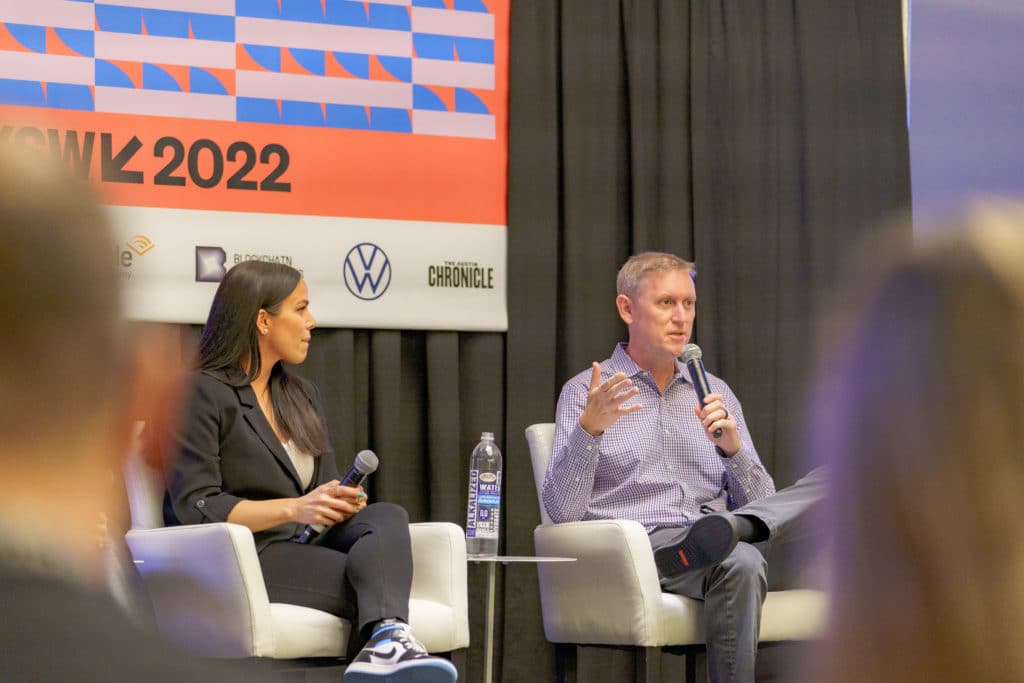
Gaining X-Ray Vision into Digital Experience Trends at SXSW 2022
WP Engine’s David Vogelpohl joins experts from Meta and HubSpot to discuss the post-pandemic digital future and the online behaviors that are here to stay
Although “digital transformation” is by now a well-worn phrase, it’s hard to find a more apt description for the widespread tech adoption and innovation that’s occurred over the last two years.
Since 2020, businesses across every industry have adapted to changing customer behaviors and adopted new technologies to meet those changes at a rapid pace.
But as we enter a new phase of this digital transformation, which of those customer behaviors are here to stay, and how will they shape the digital experiences of tomorrow?
These were among the questions at this year’s SXSW festival in Austin, Texas, where experts from Meta (formerly Facebook), HubSpot, and WP Engine came together to discuss recent shifts in the customer-digital experience and the ways in which businesses and brands are responding.

Back in person for the first time in two years, SXSW was a fitting stage for the panel, X-Ray Vision into Digital Experience Trends, moderated by Jessica Scanlon, founder of Hot Dog Marketing, one of the nation’s top branding and digital marketing agencies.
WP Engine VP of Growth David Vogelpohl was joined by Meta Global Retail Product Marketing Manager Rachel Bucalo and HubSpot Product Lead Sophia Perlman for the discussion, which covered changes in the evolving digital landscape as we navigate a post-pandemic future.
The Acceleration of Digital Trends
The scale of digital transformation that’s taken place since 2020 has been sweeping, and as so many businesses have turned to digital channels to drive revenue and engagement, the panelists were asked about the trends they’ve seen stick, and where they believed companies would continue to invest.
“In 2020, we saw tons of brick and mortar companies that had not yet adopted eCommerce models do so in a hurry,” Vogelpohl said, “and two years later, we see that they’re still using them.”
“We’ve also seen high order charges and a lack of customization options drive companies to transition those systems into homegrown systems with WooCommerce, so they can keep those eCommerce channels open but lessen the fees associated with them.”

Those trends played out over the recent holiday shopping season, with Cyber Weekend 2021 recording higher-than-ever online sales and WP Engine’s WooCommerce customers seeing a 54% increase in average Gross Merchandise Value (GMV) over the same period.
WordPress has played a key role as a democratizer for digital experiences on the web, Vogelpohl added, noting that in addition to eCommerce, websites for events, crisis management, and online courses had all seen a major lift.
At Meta, the latest phase of digital transformation has also accelerated trends that were well underway.
“A lot of these changes were already in motion pre-pandemic,” Bucalo said, “but the pace we’ve seen has been unprecedented.”
Livestreaming increased 200% on Meta’s platform in 2020, she said, and coupled with the continued rise of social media, the blur between offline and online had only gotten stronger.
“The things you would expect from an in-store experience are now online,” Bucalo said. “Online has become more experiential, with white-glove branding, ease of checkout, multiple payment options, and the demand for that seamless experience isn’t going away.”
In fact, 92% of respondents to a Meta survey said they planned on keeping the changes they’d made to their digital habits after the pandemic had ended.
And although B2C channels may have been more immediately impacted by the pandemic, the digital transformation that’s followed has also prompted an evolution in B2B channels.
At HubSpot, Perlman said, the B2B buyer’s journey is increasingly overlapping with the B2C journey, as B2B buyers search for innovation and ease of use over long, drawn-out evaluation processes.
“B2B buyers are looking for the same ease of use they have when buying sneakers on Instagram,” Perlman said. “People used to expect that software would be complicated or clunky because it had to solve complicated problems. Now, customers want something that’s as easy to use as an app on their phone.”

Ease of use and ease of implementation, she added, were the top criteria among 90% of SMB respondents in a recent HubSpot survey of technology buyers, with those criteria evident in the later stages of the buyer’s journey as well.
Based on research conducted by Hubspot, 50% of respondents from mid and corporate-sized businesses said they would be interested in purchasing (services and software) online after talking to a business representative. In addition, 30 to 40% said they would purchase online without speaking to anyone at all.
“This is a huge shift in the way people are conducting business,” Perlman said, adding that HubSpot has brought payments into its CRM platform with the express goal of supporting everything from marketing to B2B eCommerce and making the entire process frictionless.
An Increasingly Social Buyer’s Journey
Across both B2B and B2C marketing and sales, social media channels are taking on a growing, overlapping role as well, with social channels playing a larger role in decision-making processes.
Panelists discussed the ways businesses were looking to leverage social channels as a method of encouraging people to take that first step with their brand.
“As people are embarking on more self-directed searches, they’re really looking towards their peers in social media to validate those purchases before they buy,” Perlman said.
“G2 recently reported that 86% of software buyers use peer review sites before buying, and we’re seeing a huge shift towards LinkedIn, YouTube, Twitter, etc. to validate purchases for people’s businesses.”
At Meta, the evolving role of social channels is also increasingly intertwined with eCommerce, as a growing number of businesses use the platform for a wide array of activities including sales through Marketplace, conversational, and livestreamed eCommerce, and marketing activations in the metaverse.

As those trends continue, Meta is equipping its users with new tools that help clear the path for frictionless eCommerce across social channels.
“Prior to the pandemic, $213 billion in U.S. eCommerce sales were lost to abandoned shopping journeys, and that was largely due to unnecessary barriers and delays, showing the importance of providing that frictionless experience,” Bucalo said.
“As we look to the future, we’re also looking at how we support our retail businesses and our partners in reducing the number of clicks and creating more tools that make these experiences better for the customer.”
One of those initiatives, Bucalo explained, was Meta’s product tagging feature, which allows users to click on a picture as they scroll through their feed and easily complete a purchase, instead of clicking a “link in bio,” navigating to a vendor’s website, and having to search for the product all over again.
“If you think of a virtual catalog, a do-it-yourself tutorial, or an influencer campaign, bridging all of those steps down to ‘tap to shop,’ suddenly makes it so much easier to find those products,” she added.
Taking that idea a step further, Bucalo said, was Shops, which allows users to transact directly within social channels like Meta and Instagram, to further help retailers capture buyers who were otherwise likely to abandon their journey.
“This is the future,” said Bucalo “We’ve seen estimates that show social commerce sales will triple by 2025, so it’s here, we’re ready, and we’re helping our retailers get ready.”
Building the Digital Experiences of Tomorrow
The above is just a snippet of the many topics covered during the session, and panelists fielded a wide array of additional questions focused on personalization and data collection, breaking down departmental silos, and the impact emerging digital trends will have on both brands and agencies.
Click here to find out more about the panel and additional SXSW programming and visit WP Engine to learn more about the best hosting solution for WordPress.
Photos by Neil Scanlon, Hot Dog Media Productions
Start the conversation.